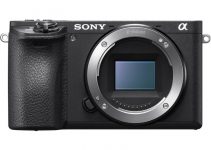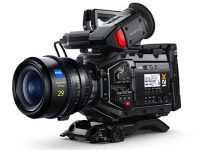When Canon launched the C200 many people were shocked. It came in at an affordable price, yet it had a true cinema-styled body design and the ability to record raw 4K video internally. It was an amazing choice. The only problem was if you didn’t want to use raw, which makes huge files, you were stuck with a limited 8-bit codec.
Stuck without any CFast cards, filmmaker Ben Schubert decided to check out how the internal XF-AVC format holds up against using the HDMI output for an uncompressed 8-bit signal being recorded in ProRes. It’s a slight difference on paper, compressed 8-bit 4:2:0 vs uncompressed 8-bit 4:2:2, but it is an interesting comparison for C200 users who don’t want to always rely on raw.
The first look at the C200 with default settings was not very impressive to Schubert. It’s a bit noisy and not very malleable in post. The XF-AVC codec seemed to be usb a bit better overall for internal recording.
Even though the image quality isn’t the absolute best, it is important to consider that the files are so much smaller and that in turn makes the whole system cheaper to use.
If you want better, without going the raw route, you’ll need to look at capturing the camera’s video output with an external recorder. Schubert uses the Atomos Ninja V for these tests. It is a bit bulkier and requires extra equipment, but you can get much better image quality. You can also save to a format such as ProRes which is easier to use in your NLE.
One thing that I appreciate about these tests is that Schubert was able to record internally and externally at the same time. The only difference between the footage is the recording method. It was all recorded at 4K resolution.
Upon inspection of the footage, you can see there is a little bit more detail in the ProRes HQ recording. This is because the uncompressed signal is being sent and then being compressed much less than the internal codec.
An explanation for this is that internal compression usually has a limit on how much detail can be captured before it needs to compress more to keep file sizes down. This is extremely apparent in scenes with a lot of moving details, such as trees with lots of moving leaves and in the water in the examples here.
The next consideration is the flexibility in post. ProRes seems to capture a bit more of the camera’s total detail and dynamic range. Blown highlights and dark shadows are more likely to lose detail with internal compression.
An interesting final test is the, supposedly better, 10-bit 4:2:2 output in Full HD. Compared to the 4K footage, there seemed to be more artifacts related to downsampling, such as moire. It’s an interesting choice if you absolutely need 10-bit, say for green screen work, but for everyday use, it might not be the best.
Schubert’s final suggestion is that if your choice is between internal or external recording and you aren’t doing raw that the external recorder is worth the extra hassle. It not only produces a better image, it also gives you more tools for monitoring.
[source: Ben Schubert]
Order Links:
Disclaimer: As an Amazon Associate partner and participant in B&H and Adorama Affiliate programmes, we earn a small comission from each purchase made through the affiliate links listed above at no additional cost to you.



